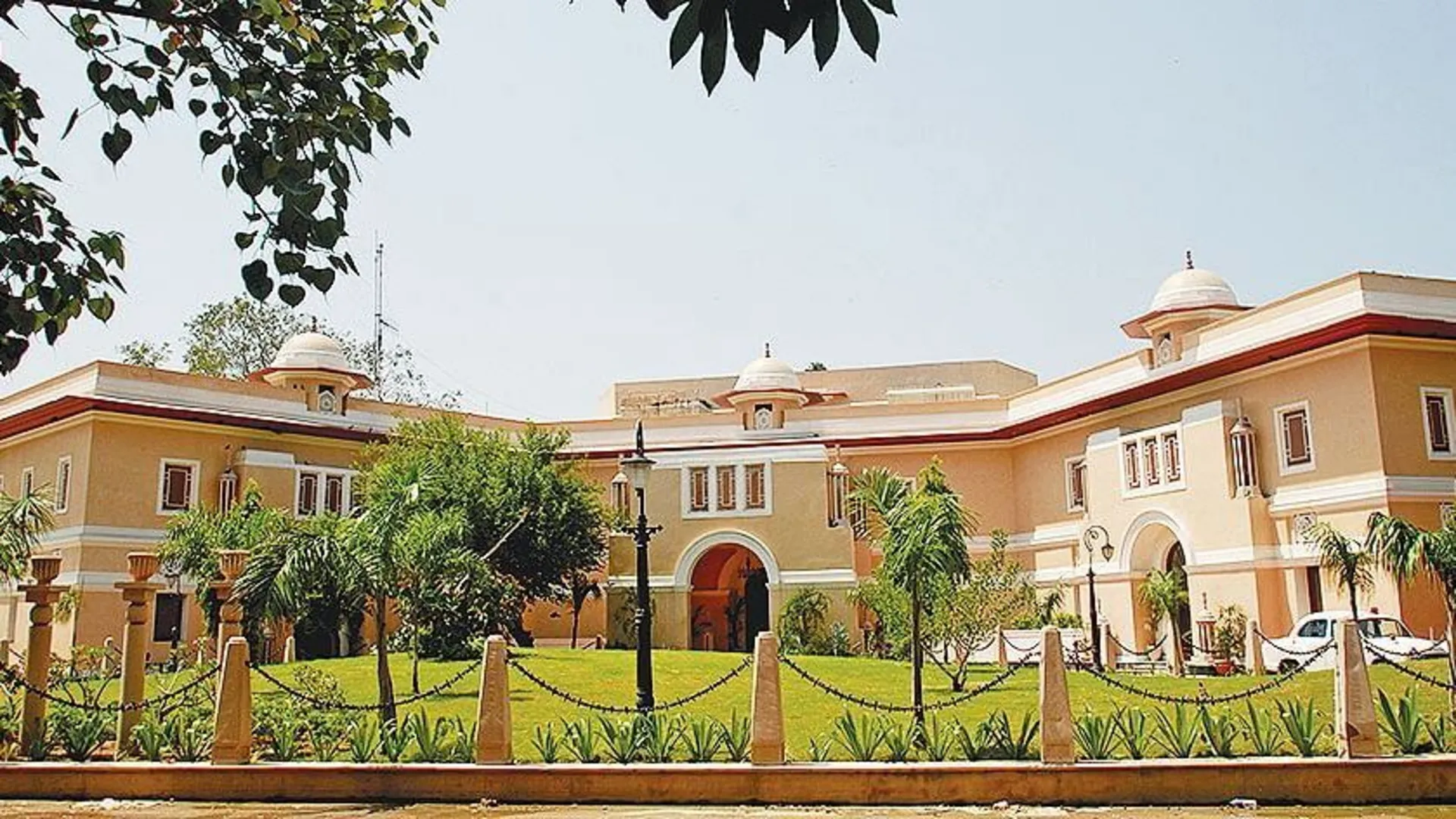
Raj Shahani presents Mukhowta, a series of wood works where he makes a forest of antique wooden corbels on bases in a circular formation like a sacred forest. He repairs accentuates each object with a metal covering to reflect on our alter egos. Drawing inspiration from the sacred Snake Groves of Northern Malabar he creates a constellation of wood and metal in the Mughal Fountain Rotundas of Bikaner house. The exhibition will be on display until 29 February.
Raj Shahani places pieces of Burma teak behind shining plates of metal – copper, gold, silver, panchadhatu, bronze ,German silver, brass and steel, reminding us of the ethereal presence of materials used in sculpture, but it also hides something valuable behind by a veneer of a shining metal. That shining metal is our alter ego, our ‘Mukhowta’, the mask that we don hiding our real beautiful selves in wood. The two fountains in the courtyard don snake sculptures made from a jute rope adorned with an iron hood and tail. Calling them ‘Sarpa Devtas’ they are drawn from the sacred Sarpa Kavus or Snake Groves of Kerala, through which water sprouts towards a blue sky above beckoning our belief in nature. Protecting us.
“Raj Shahani’s practice in art gave us the opportunity at AnamKara to deal with complex realities of queerness and the gaze but also the brilliance of self taught artiste and their unique practices. Raj is prolific in his practice of sculpture, a vocation he uses as a catharsis for repair and therapy in a world where we are now living through a mental health pandemic of humongous scale. Art today is a soul friend in change, and soul friend translates to AnamKara in Celtic” says Priyanka Kheterpal of AnamKara.
Masks have had an undeniable existence in the history of visual culture of India. Masks act as a spiritual apparatus to performances that are esoteric and magical, used by shamans as acts of divine presence and the clairvoyance. In the districts of the Malabar in Northern Kerala – Theyyam is a calling of nature spirits by shamanistic characters who dwell in a sacred cove called the Kavu, where snakes of fortune from the Nagaloka inhabit as protectors of the forest. The Theyyam dancers dance through the wake of night enthralling an audience into ecstasy.
‘Pitala (Brass)’ and ‘Tambra (Copper)’ are two sculptures of the logs that in their veins hold memory of the forests. ‘ Swarna (Gold)’ and ‘Rajata (Silver)’ are the two anapakshis where the peacocks are embellished with a Gold and Silver plating. ‘Kansa ( Bronze), ‘Tina’ (German Silver), ‘Loha’ ( Steel) and ‘ Panchadhatu (Five Metals) ‘ are four sculptures where Raj makes the brackets vertical in an upright standing position by giving them legs using bronze, tin, steel and aluminium. Using the same metals he fills in the cavities left in by the pillars and wooden fixtures that have been taken apart. By filling them in he makes a cosmetic effort at making them complete again using a shining surface. An aesthetic measure is at play – we aren’t ever made to feel complete with our adornments.
A smaller third corbel has a vine of floral elements emerging from the jaws of the dolphin.
He caps this makara with a ‘panchoha’ or ‘panchdhatu’ alloy. The gangetic dolphin is a very sacred animal that is the vehicle or vahana of the Ganges, India’s sacred river. Panchaloha or Panchadhatu is an alloy of gold, silver, copper , zinc and iron and is used across Hinduism, Buddhism and Jainism to make sacred idols and utensils for worship. Giving the makara of the Gangetic Dolphin a ‘Panchaloha’ embellishment Raj plays on the dichotomy or sacredness and pollution. ‘Makara’ in Ancient Indian texts is revered as the vahana or vehicle of the Mother Ganges, a river that has power to purify but one we often pollute. This dichotomy is inherent in the Modern Indian psyche which is lost to grandstanding and statements.















